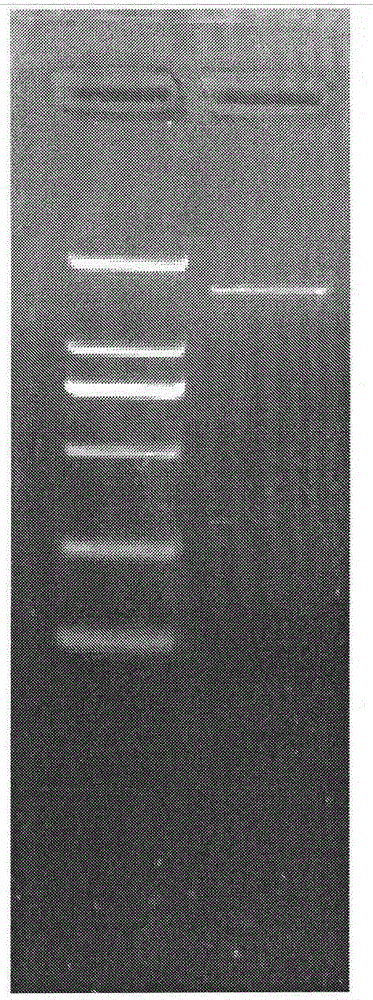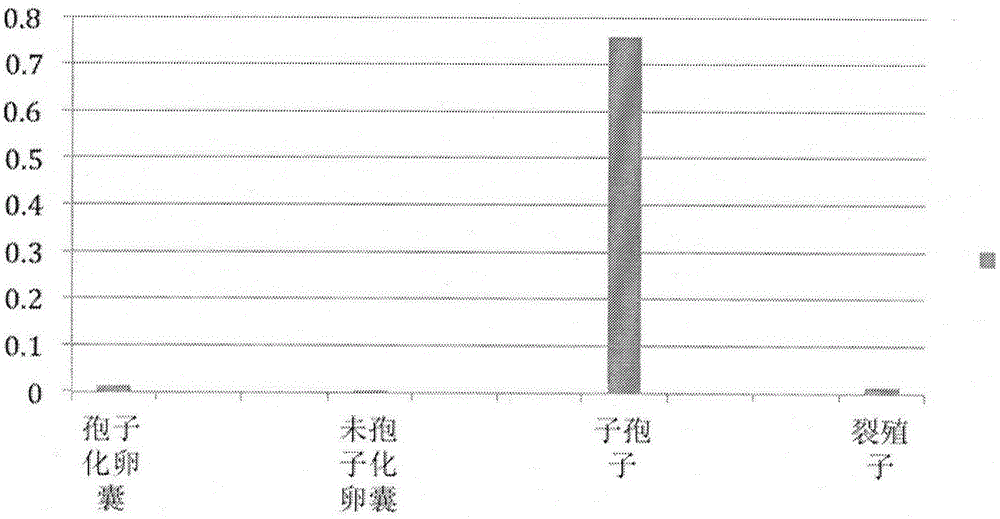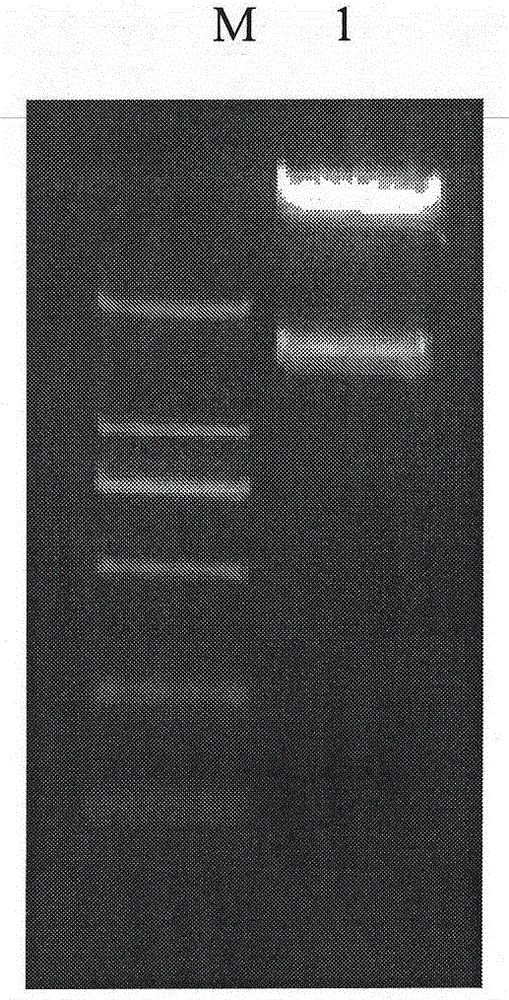Eimeria tenella serine/threonine protein kinase (Et STK) gene and application thereof
A kind of Eimeria and gene technology, applied in the direction of anti-enzyme immunoglobulin, application, genetic engineering, etc., can solve the problems such as easy to produce drug resistance, and achieve the effect of good immunogenicity
- Summary
- Abstract
- Description
- Claims
- Application Information
AI Technical Summary
Problems solved by technology
Method used
Image
Examples
Embodiment 1
[0043] Example 1 Cloning and analysis of the full-length eDNA of the Eimeria tenella EtSTK gene
[0044] 1. Materials
[0045] Insect strains and in vitro cultured cells: Eimeria tenella (E. tenella) was preserved and propagated by Shanghai Veterinary Research Institute, Chinese Academy of Agricultural Sciences. DF-1 (chicken embryo fibroblast) cells were used for infection, inhibition, immunofluorescence experiments and transfection of eukaryotic expression recombinant plasmids.
[0046] 2. Method
[0047] 2.1 Total RNA extraction
[0048] Before the experiment, the clean metal extraction utensils were wrapped with tinfoil and baked in an oven at 180°C for 6 hours. The operating table and the centrifuge tube rack were sterilized with 75% alcohol to ensure no RNase contamination. The pipettes, pipette tips and centrifuge tubes used are all designed for RNA extraction.
[0049] The extraction of sporozoite total RNA was performed according to the instructions of Trizol rea...
Embodiment 2
[0072] Example 2 Analysis of Expression Differences of EtSTK Gene in Different Developmental Stages of Eimeria tenella
[0073] Total RNA of four developmental stages of Eimeria tenella (unsporulated oocysts, sporulated oocysts, sporozoites, and second-generation merozoites) were extracted, and Eimeria tenena unsporulated The first strand of cDNA of oocysts, sporulated oocysts, sporozoites, and second-generation merozoites was used as a template, and real-time fluorescent quantitative PCR was used to select 18srRNA as an internal reference to verify that the EtSTK gene was used in different developmental stages of Eimeria tenella. expression in the body. Table 3 is the real-time fluorescence quantitative PCR amplification primer sequence.
[0074] Table 3 Real-time fluorescence quantitative PCR amplification primer sequence
[0075]
[0076]The results showed that EtSTK gene mRNA was transcribed in the four developmental stages of Eimeria tenella, and the transcription le...
Embodiment 3
[0077] Example 3 Construction of EtSTK Gene Prokaryotic Expression Recombinant Plasmid and Expression of Recombinant Protein
[0078] The recombinant cloning plasmid pGEM-T-easy-EtSTK, which was sequenced correctly before, was double-digested with restriction endonucleases BamHI and EcoRI, and then connected to the prokaryotic expression vector pColdI which was double-digested with the same restriction endonucleases, The recombinant expression plasmid pColdI-EtSTK was constructed. After transforming Escherichia coli TOP10, the target band with the expected size was obtained by PCR and double enzyme digestion (see image 3 ), indicating that the prokaryotic expression plasmid containing the EtSTK gene was constructed successfully.
[0079] The successfully constructed pColdI-EtSTK recombinant expression plasmid was transformed into Escherichia coli BL21(DE3), and its expression was induced by 1mmol / LIPTG at 37°C and analyzed by SDS-PAGE electrophoresis. It was found that the ...
PUM
| Property | Measurement | Unit |
|---|---|---|
| molecular weight | aaaaa | aaaaa |
| control rate | aaaaa | aaaaa |
Abstract
Description
Claims
Application Information
 Login to View More
Login to View More - R&D
- Intellectual Property
- Life Sciences
- Materials
- Tech Scout
- Unparalleled Data Quality
- Higher Quality Content
- 60% Fewer Hallucinations
Browse by: Latest US Patents, China's latest patents, Technical Efficacy Thesaurus, Application Domain, Technology Topic, Popular Technical Reports.
© 2025 PatSnap. All rights reserved.Legal|Privacy policy|Modern Slavery Act Transparency Statement|Sitemap|About US| Contact US: help@patsnap.com



